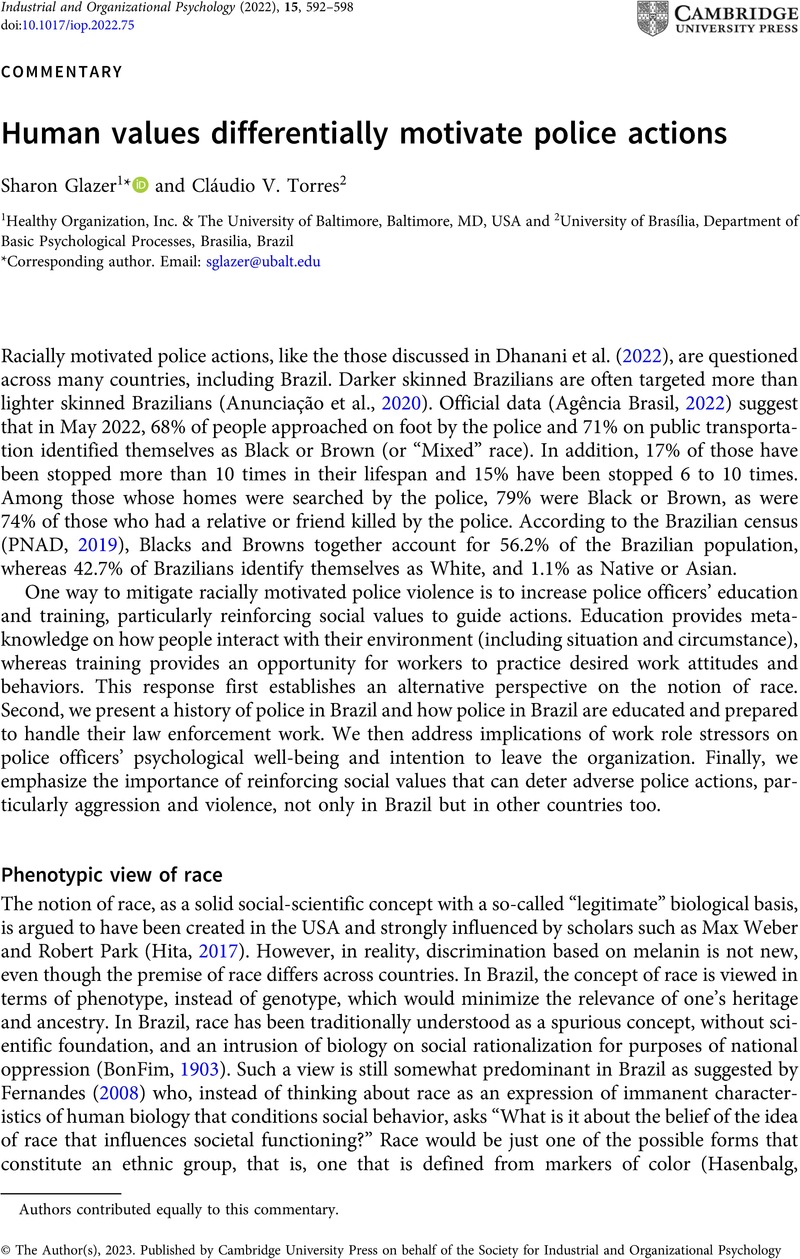Nascimento, T. G. (
2014) Performance compétente: Relations avec valeurs, pratiques et identité dans le service de police [Professional performance: Relationships with values, practices and identity in the police service].
Unpublished doctoral dissertation. Université d´Aix-en-Marseille, Marseille, France.
Google Scholar 